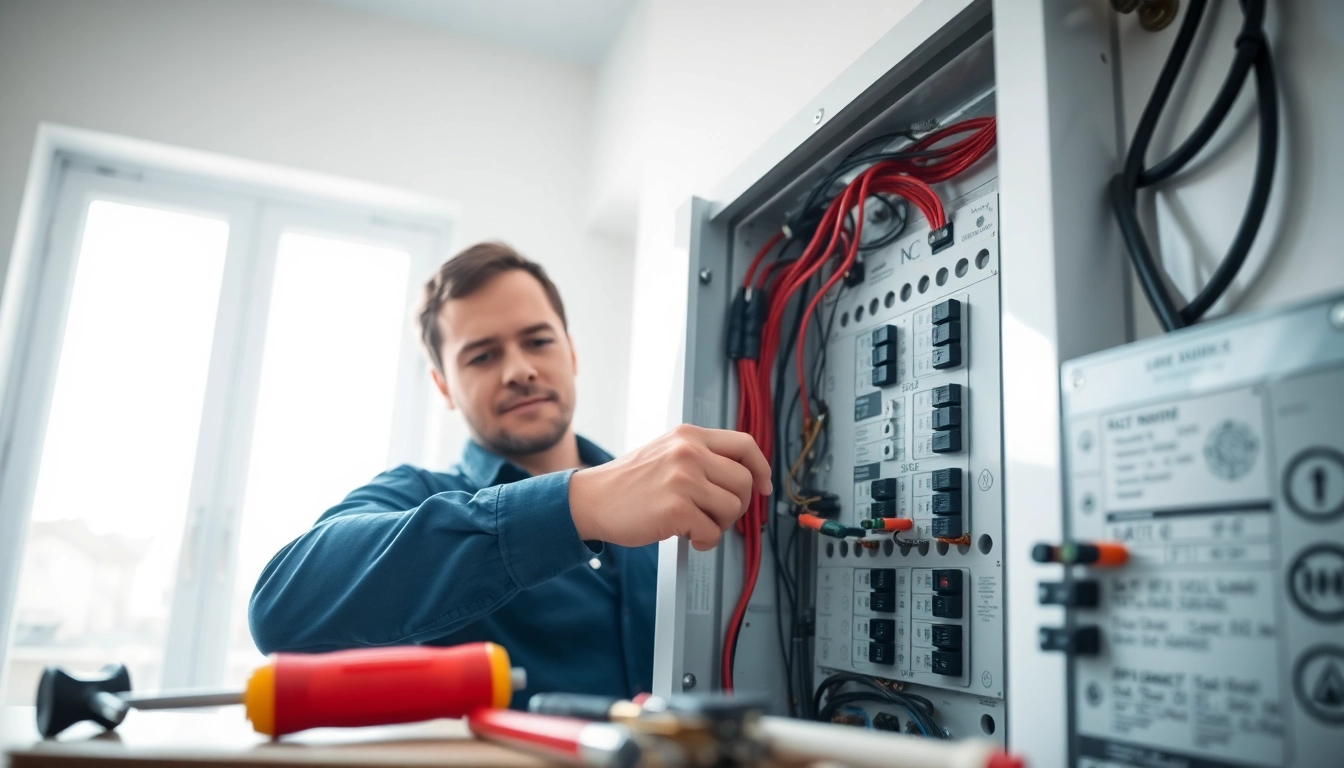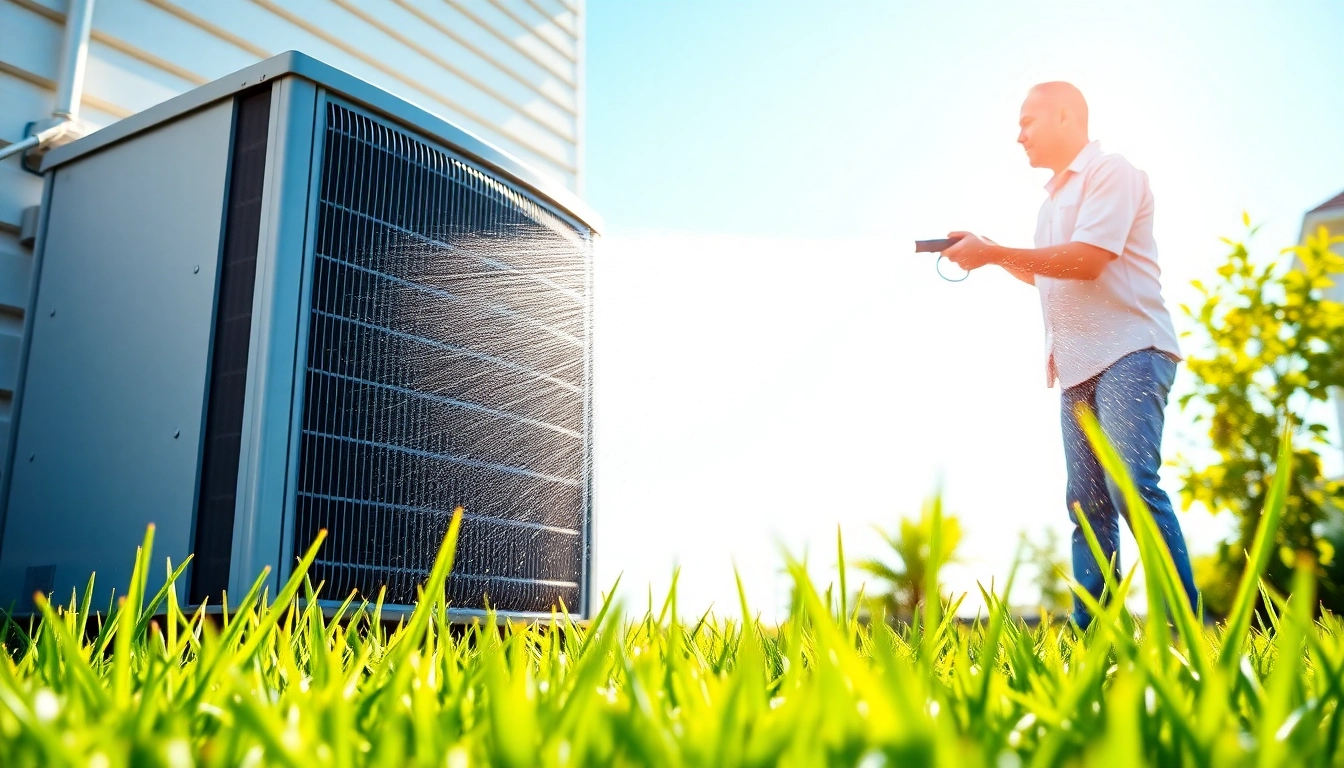What is an Electrical Panel?
Definition and Functionality
An electrical panel, often referred to as a breaker box or distribution board, serves as the central hub of your home’s electrical system. Its primary purpose is to distribute electricity throughout the house, supplying power to outlets, appliances, and fixtures. The panel essentially acts as a bridge between the power supply from the utility company and the individual circuits that power your home.
Electrical panels have evolved significantly over the years, transitioning from older models such as fuse boxes to modern circuit breaker panels, which provide enhanced safety and convenience. Inside the panel, circuit breakers or fuses are used to protect the wiring from overloads and short circuits, ensuring that power flows safely to where it is needed without risking damage or fire.
Key Components of Electrical Panels
Understanding the key components of an electrical panel is essential for homeowners. The main components include:
- Main Breaker: This is the primary switch that controls the electricity flow to your entire house. It can shut off power in case of emergency or maintenance.
- Circuit Breakers: These devices automatically interrupt the electrical circuit if there is an overload, preventing potential fire hazards.
- Bus Bars: These are conductive materials within the panel that distribute electrical current to various circuit breakers.
- Neutral Bus Bar: This connects all the neutral wires from the circuits to ensure safe operation.
- Grounding Bus Bar: This is connected to the grounding system of your home to channel stray electricity safely into the ground.
The Role of Electrical Panels in Home Safety
Electrical panels are critical for maintaining safety within the home. They help minimize the risk of electrical fires and shocks by ensuring that power is properly distributed and managed. Modern electrical panels include features such as ground fault protection and surge protection, which are designed to safeguard against unexpected power surges and water contact.
Common Issues with Electrical Panels
Signs of Wear and Tear
As with any mechanical system, electrical panels can exhibit signs of wear and tear over time. Homeowners should be vigilant for the following signs that indicate it may be time for an upgrade:
- Frequent Breaker Tripping: If circuit breakers are tripping more often than usual, it could mean that the panel is struggling to handle the electrical load.
- Burning Smell or Discoloration: Any signs of smoke, burning smell, or discoloration on the panel surface are serious warnings that indicate overheating and potential failure.
- Old Technology: Older models, particularly those manufactured before the 1990s, may not meet current electrical codes or require more power than they can provide.
Overloaded Circuits and Their Risks
Overloading occurs when too many devices are connected to a single circuit, leading to higher energy consumption than the circuit was designed to handle. Overloaded circuits can lead to overheating, circuit failure, and in the worst case, fire.
To prevent overloading, each circuit should be appropriately rated for the expected load. Homeowners should consider the total wattage of devices connected to a circuit and ensure it does not exceed the circuit’s capacity.
Outdated Technology in Electrical Panels
Many homes still rely on outdated electrical panels like fuse boxes that utilize fuses instead of modern circuit breakers. This older technology is not only inefficient but can pose safety hazards due to the inability to withstand modern electrical demands.
Upgrading to a contemporary electrical panel can improve energy efficiency and safety, accommodating the increasing number of devices that require power in today’s homes.
When to Upgrade Your Electrical Panel
Indicators That It’s Time to Replace
Homeowners should consider an upgrade to their electrical panel under several circumstances:
- Electrician Recommendations: If a certified electrician recommends an upgrade based on an assessment of your current panel’s capabilities and safety, it’s a good idea to follow their advice.
- Renovation or Addition: Adding new rooms or high-demand appliances often necessitates more power, making an upgrade essential.
- Age of the Panel: If your panel is over 25 years old, an upgrade may be necessary to meet current safety standards and electrical codes.
Benefits of Upgrading Your Electrical Panel
Upgrading your electrical panel is not merely a matter of compliance; it has several important benefits:
- Increased Power Supply: A newer panel can handle a higher total load, allowing you the freedom to run multiple appliances and devices simultaneously.
- Enhanced Safety: Modern panels come with improved safety features that minimize the risk of electrical fires and electrical shock.
- Improved Efficiency: Up-to-date technology results in lower energy wastage, leading to potential savings on energy bills.
Understanding Electrical Codes and Regulations
When upgrading your electrical panel, it is essential to adhere to local electrical codes and regulations. These codes dictate how electrical systems should be installed and maintained for safety. Compliance not only ensures safety but can also be a prerequisite when selling your home.
Types of Electrical Panels Available
Standard Circuit Breaker Panels
Standard circuit breaker panels are the most common type in residential settings. They are available in various amperages, typically ranging from 100 to 400 amps, depending on the size of the home and its electrical needs. These panels feature multiple dedicated circuits that allow for segmented control of the home’s electrical supply.
Smart Panels and Their Advantages
Smart electrical panels represent the next generation of electrical panel technology, integrating advanced monitoring and control capabilities. These systems allow homeowners to track their energy use in real-time, optimize energy consumption, and enhance home automation.
Smart panels can alert homeowners to usage trends, potential issues with circuits, and can even communicate with solar panels and home battery systems, creating a more cohesive energy management environment.
Cost Considerations for Different Panel Types
The cost of an electrical panel upgrade varies widely based on factors such as the type of panel, the complexity of the installation, and local labor rates. Here’s a breakdown:
- Standard Panels: These typically range from $800 to $2,000, including installation.
- Smart Panels: These can be more expensive, costing between $2,500 and $4,000 due to their advanced features and capabilities.
- Additional Costs: Upgrading power lines, circuit wiring, or the service drop from the utility may incur extra costs.
How to Choose the Right Electrical Panel
Assessing Your Home’s Electrical Needs
Determining the right electrical panel for your home begins with assessing your electrical needs. Consider the following:
- Current Usage: Analyze your current energy consumption and the types of appliances you frequently use.
- Future Needs: Plan for potential future electrical needs, such as home additions or upgrades to high-demand appliances.
Consulting with Professionals
Engaging with a licensed electrician is crucial in the process of selecting an electrical panel. They will evaluate your home’s electrical system, recommend suitable panel options, and ensure compliance with local building codes.
Reviewing Warranties and After-Sales Support
When choosing an electrical panel, consider products with solid warranties and robust after-sales support. This can provide peace of mind regarding the investment and any future issues that may arise.



